Queenie's Aquatic Adventures
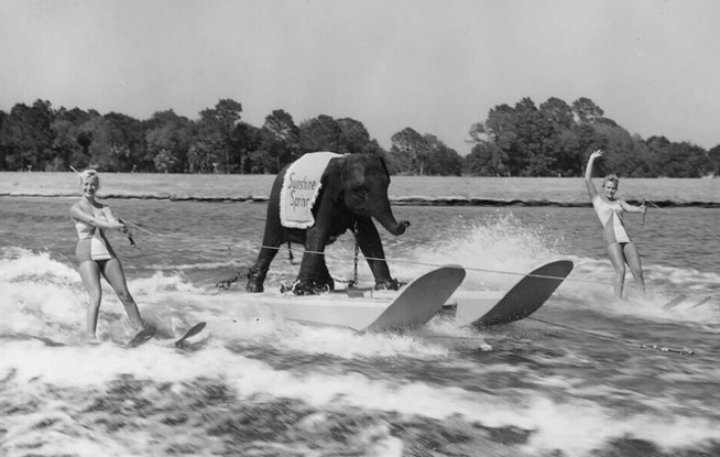
In a snapshot from the 1950s, something extraordinary and seemingly unbelievable unfolds before our eyes: Queenie, the circle elephant, gracefully water-skiing! This astonishing photo captures a genuine moment, not a trick of early photo editing. Queenie, renowned for this unique talent, performed this famous turn alongside her trainers.
Queenie's dedicated trainer, Liz Dane, always maintained that the elephant genuinely enjoyed her water-skiing escapades, free from mistreatment or coercion. This remarkable act mesmerized and drew crowds all across America, showcasing Queenie's extraordinary skills. It’s a testament to the era's unique entertainment and a whimsical blend of ability and trust between an animal and her human companions.
Brigitte Bardot Before the Blonde
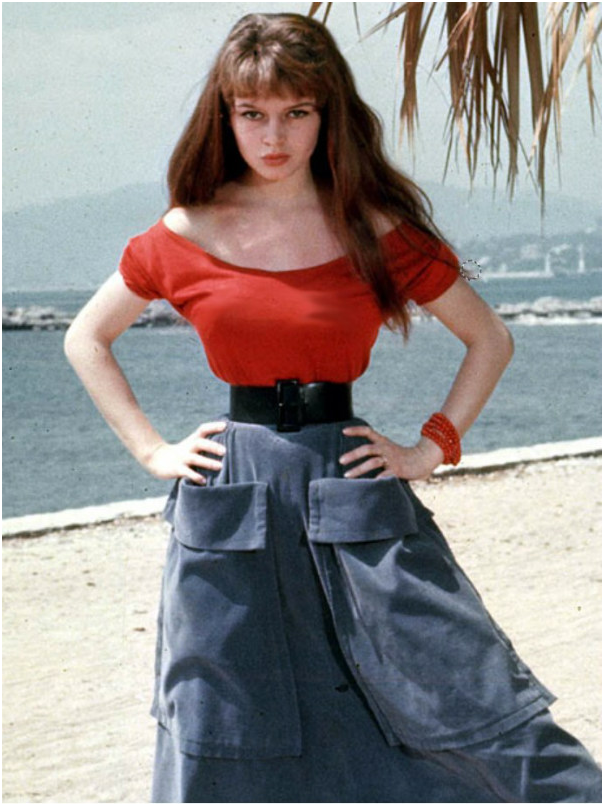
In 1955, a 19-year-old Brigitte Bardot graced the Cannes Film Festival, not yet the blonde bombshell icon the world would soon adore. This photograph captures her at a turning point, just before her ascent to stardom. At this time, Brigitte had only starred in a few low-budget French and Italian films, her fame still a whisper on the horizon.
Her natural beauty and charm are evident even before she adopted her signature blonde hairstyle that would define an era. In just a few years, her face and captivating on-screen presence would become known worldwide, but this photo shows the humble beginnings of a star about to shine.
When Duty Meets Heat

Being a royal guardsman is no easy feat, especially under the blazing sun, clad in heavy uniforms and helmets. This photo poignantly captures a moment when one guardsman, overwhelmed by the heat and the rigors of his duty, faints just as The Queen passes by on horseback.
Such incidents aren't uncommon in the life of a guardsman; in 2017, during a particularly scorching day, seven soldiers fainted at a parade. It's a stark reminder of the physical demands placed on these stoic figures, who are often seen as symbols of unwavering discipline and resilience yet are not immune to the challenges posed by nature and their demanding role.
Shorter Skirt Lengths Take Flight
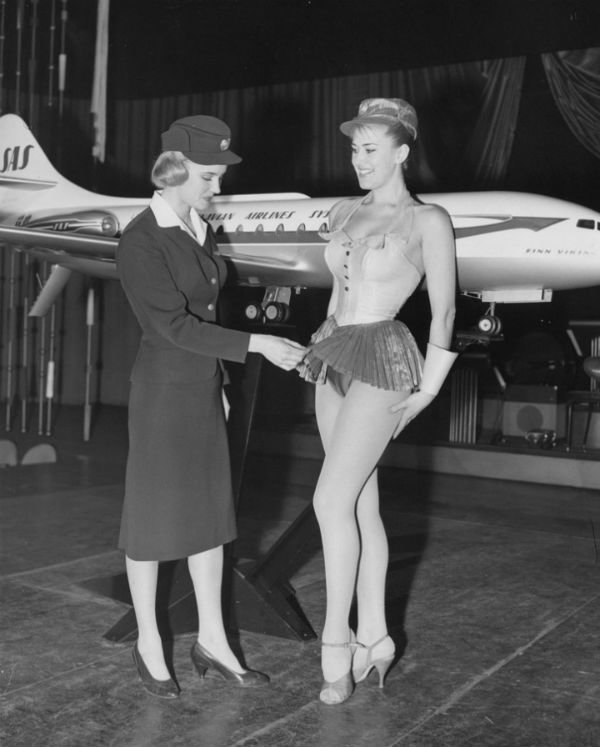
It's 1959, and Swedish Airlines has a humorous dilemma. Their stewardess uniforms are about to get a modern makeover, with shorter skirts in the fashion forecast. To gauge how little they should go, who better to call than Birgitta Lindman, a stewardess celebrated for her style?
Birgitta, who graced the cover of Life magazine in 1958, was no stranger to the spotlight. Her image captivated audiences and was a brilliant marketing play for SAS. In this snapshot moment, she inspects a showgirl's daringly short skirt, perhaps mulling over the future of airline fashion. It's a charming peek into when air travel embraced a chic new look.
The Beatles Before the Crosswalk

On August 9, 1969, The Beatles, then the world's most renowned band, congregated outside the legendary Abbey Road studios. They were moments away from creating one of the most iconic album covers in music history. In these precious minutes before they made their famous stride across the zebra crossing, Paul McCartney's wife, Linda, captured candid shots of the Fab Four.
These images, less known than the famous crosswalk photo, offer a behind-the-scenes glimpse at the band. They show The Beatles in a relaxed, unposed state, adding a layer of intimacy to the public's perception of this historic day in music.
Stars Off Screen in Streetcar
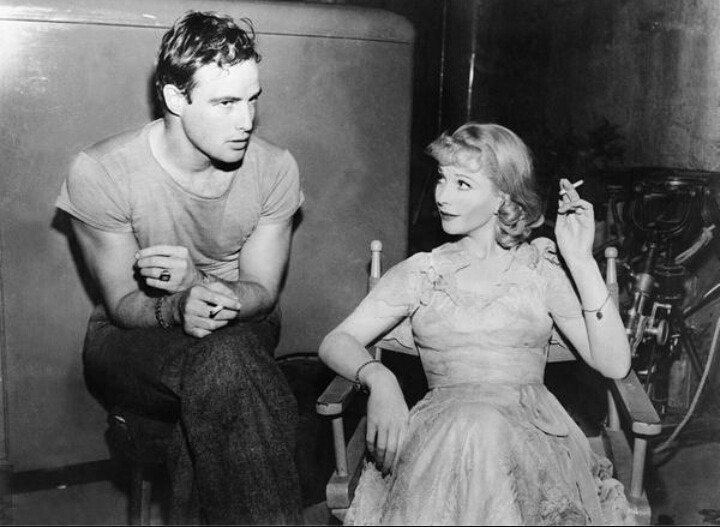
In this candid shot from the set of the 1951 classic "A Streetcar Named Desire," the legendary Marlon Brando and Vivien Leigh exude their star quality, even in a relaxed moment. Vivien, already a world-famous star and later an Oscar winner for her role in this film, effortlessly radiates confidence and glamour, cigarette in hand.
Meanwhile, Marlon, a fresh-faced newcomer at the time, sits beside her, marking the start of his illustrious career. This behind-the-scenes photo captures the essence of two of Hollywood's most iconic figures, highlighting the charisma and talent that made them stand out, even when the cameras weren't rolling.
North Korea's Grocery Aisles

In 2012, photographer Michal Huniewicz captured a scene that felt eerily unfamiliar to the outside world. It was a glimpse into a North Korean supermarket, a place shrouded in silence and desolation. Under the authoritarian regime of North Korea, photography without government permission is strictly prohibited, making this covertly taken photo all the more remarkable.
The image reveals rows of empty shelves, a stark reminder of the daily deprivation endured by many North Koreans. In a nation isolated from the global community, necessities can be scarce. Michal's daring snapshot offers a rare perspective, shedding light on the challenges faced by ordinary citizens in a reclusive and tightly controlled society.
Final Flight of the F14 Tomcat
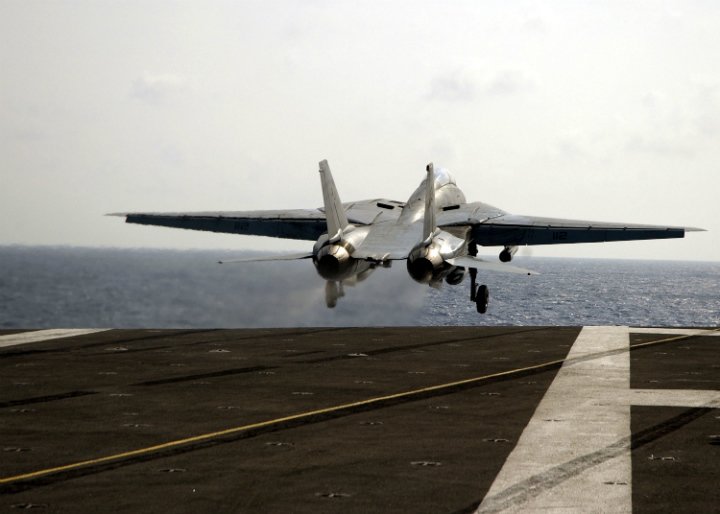
In this poignant image, an F14 "Tomcat" fighter jet takes off from the USS Theodore Roosevelt for its final flight, marking the end of an era in United States military aviation. Retired in a 2006 ceremony at NASA, the F14 was a Cold War icon designed to counter Russian MiG aircraft post-Vietnam.
This photograph captures more than just a jet; it symbolizes a shift in military technology as this formidable aircraft makes way for the next generation of fighter jets. The F14, with its impressive history and service, leaves behind a legacy as it soars into the skies one last time, closing a significant chapter in aerial warfare history.
Antarctic Awes in Terra Nova

The Terra Nova Expedition, a British mission in the early 1910s, embarked on a journey to the uncharted and enigmatic Antarctica. A photograph from this expedition captures the essence of what the scientists must have felt upon their arrival: a blend of awe and isolation in the face of this vast, untouched wilderness.
The image reflects the stark beauty and formidable challenge of a land that was then largely a mystery. For these explorers, Antarctica represented a physical journey and a foray into the unknown, a place of both desolation and majesty, as they endeavored to map and understand this remote corner of the world.
Leo's Secret Identity
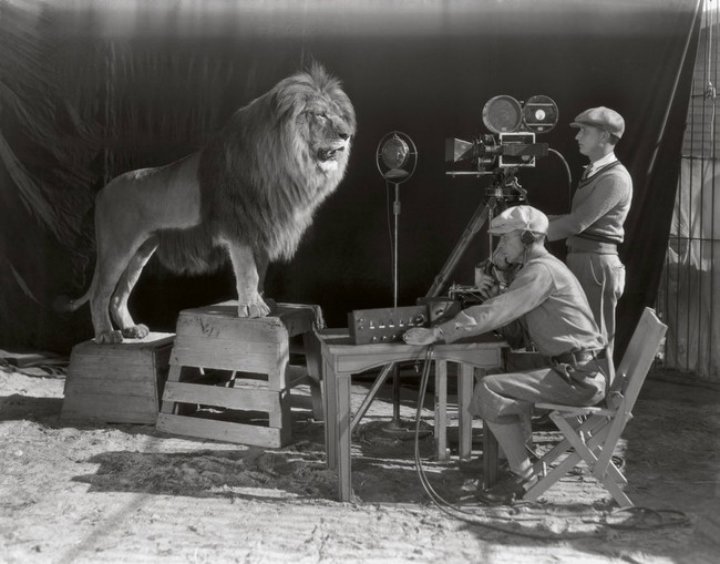
Imagine the earth-shaking roar of the MGM lion, a sound and sight familiar at the start of countless classic movies. This iconic image, deeply etched in cinematic history, first echoed in theaters with "White Shadows in the South Seas," MGM's initial talking picture in 1928. While we know this majestic lion as Leo, his real name is Jackie.
Jackie's roar, a symbol of MGM's filmmaking prowess, greeted audiences in every film until the 1950s. Today, his legacy lives on, his roar still resonating as a timeless emblem of the golden age of cinema, a true hallmark of movie magic that continues to captivate and inspire.
High Seas Highwire Act
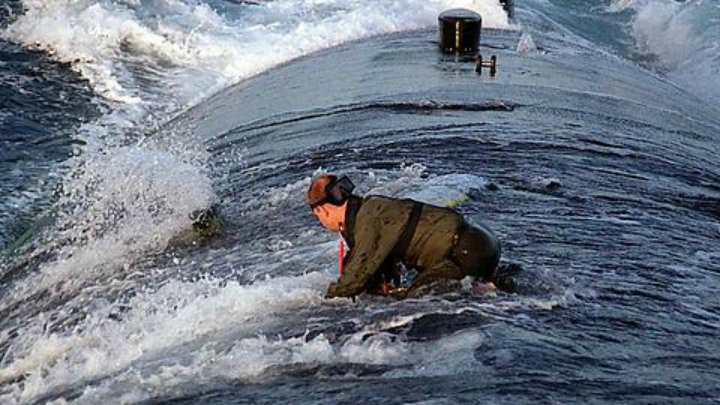
Perched atop a moving USS Queenfish, a crew member in this photo showcases a blend of bravery and balance. This remarkable image, date unknown, captures a moment from the life of a Balao-class submarine, a cornerstone of the United States Cold War naval fleet.
Named after a Pacific coast fish, the Queenfish was lauded as the fastest and quietest in its class, a silent sentinel of the deep. Its design, which included larger passageways, was revolutionary, allowing easier access and movement for crew members. This snapshot highlights the crew's skill, ingenuity, and strategic might behind one of the era's most formidable submarines.
Anne Baxter's Royal Regalia

In Cecil B. DeMille's 1956 cinematic spectacle, "The Ten Commandments," Anne Baxter, as Queen Nefretiri, captivated audiences not just with her performance but with her stunning costumes. This photo showcases Anne in her lavish attire, a visual feast that left viewers in awe during the film's release.
While the costumes dazzled with their intricate design and elegance, they weren't exactly a lesson in historical accuracy. Yet, this didn't diminish their impact; instead, they added to the film's grandeur, making it Cecil's most successful and extravagant production. Anne's portrayal, combined with her mesmerizing wardrobe, helped etch "The Ten Commandments" into the annals of classic Hollywood epics.
Blue Eyes Before the Storm
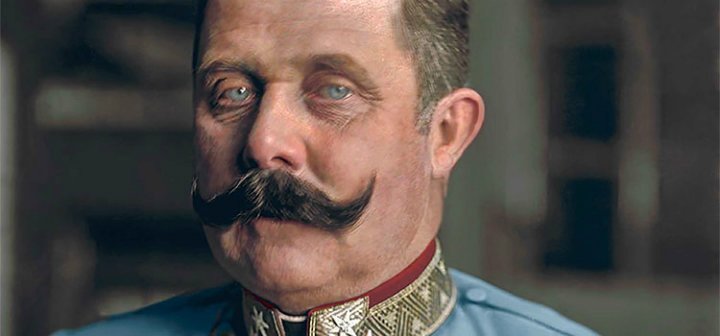
Archduke Franz Ferdinand of Austria, captured in a rare color photograph, stands as a figure of historical significance, his piercing blue eyes and notable mustache marking a distinguished presence. This image, taken before the fateful day of his assassination in Sarajevo in 1914, holds more than just the portrait of a man; it foreshadows a pivotal moment in history.
His assassination would soon ignite the flames of the First World War, a conflict that reshaped the world. In this still frame, the archduke's gaze seems almost aware of the monumental events about to unfold, a moment frozen before the world changed forever.
Football in the Face of Fear
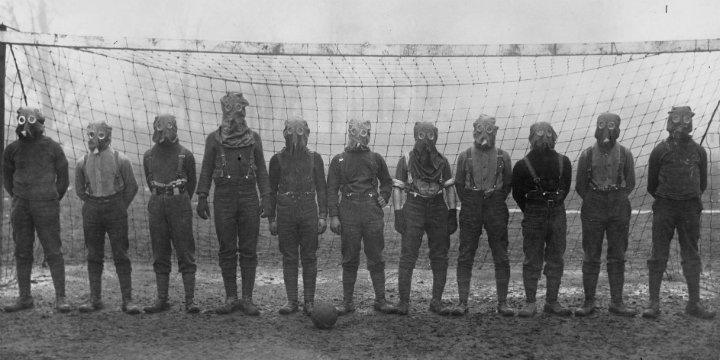
In a haunting yet poignant image from 1916 in northern France, a group of British soldiers prepare for a quick game of football, their figures adorned with gas masks, creating a surreal scene against the backdrop of war-torn landscapes. This striking attire was a necessary precaution in an era where mustard gas loomed as a constant threat.
Over 50,000 tons of gas were used by the end of World War I, making such protective measures a grim part of daily life on the front lines. Yet, at this moment, the soldiers' love for football shines through, offering a glimpse of normality and camaraderie amidst the chaos of war.
Boats on the Boulevards
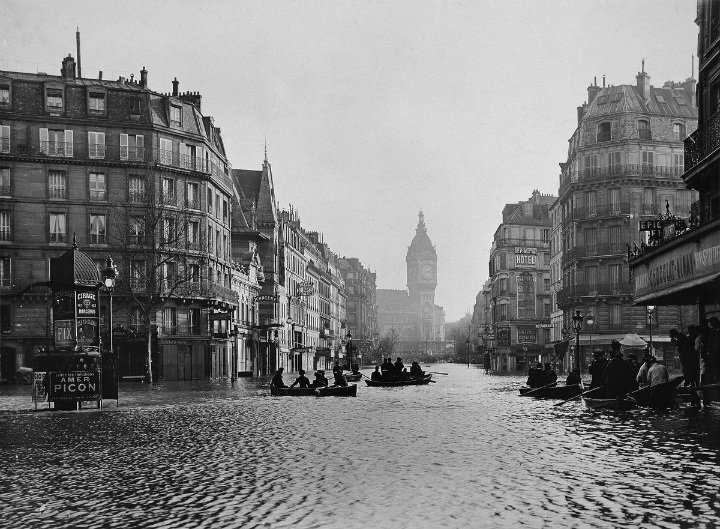
When the river Seine rebelliously surged over its banks in 1910, Paris faced an extraordinary flood, the waters rising a remarkable eight meters above their regular level. This calamity brought catastrophic damage to the city and its people. But ever resilient and inventive Parisians didn't let this aquatic intruder dampen their spirits.
As the floodwaters stabilized, they adapted. Streets turned into waterways, and boats replaced cars and walking as the new mode of transportation. Rowing through the city, they maintained a semblance of usual life amidst the flood. This historic flood spurred new measures to prevent such a disaster from happening again.
Helen Keller's Insightful Touch
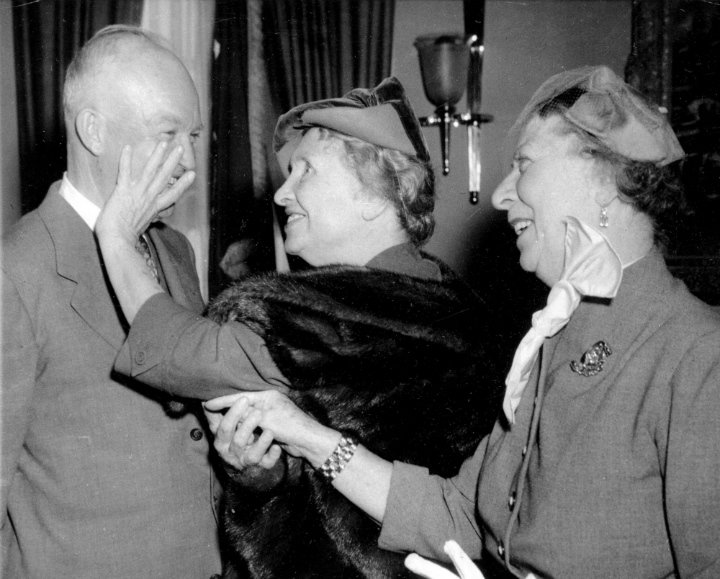
In a moving and powerful moment from 1953, Helen Keller, at 73, meets President Dwight D. Eisenhower, greeting him in her unique and memorable way: by exploring his face with her hands. This photograph captures her, renowned for overcoming her blindness and deafness to become a respected literary figure, as she 'sees' the president through touch.
Helen believed this tactile experience allowed her to perceive his courage and resolve. This intimate interaction between two influential figures transcends conventional communication, showcasing Helen's extraordinary ability to connect with others despite her physical limitations and highlighting the depth and insight she found through her sense of touch.
Neil Armstrong's Astronaut Breakfast
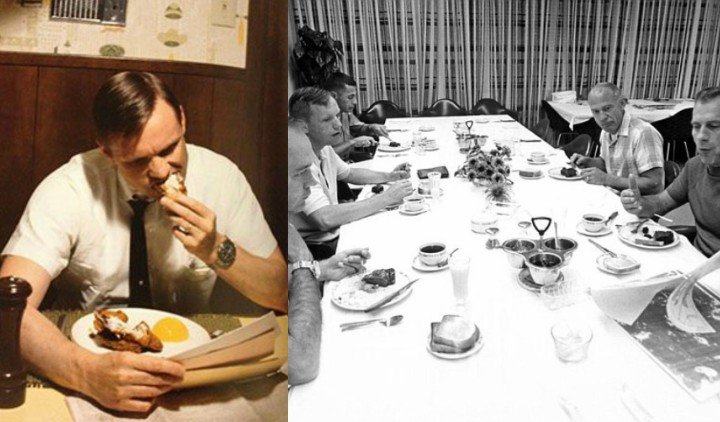
Before Neil Armstrong embarked on his legendary Apollo mission to the moon, a meal fit for a pioneering astronaut was in order. Contrary to the viral image showing him with a chicken leg and canned peaches, NASA clarified the real deal: he enjoyed a hearty breakfast of scrambled eggs, steak, and coffee.
This wasn't a solitary affair as Neil shared this energizing meal with his fellow crew members and the dedicated ground crew, bonding over a simple yet substantial spread. This breakfast was a moment of camaraderie and preparation, fueling the men about to make history and step into the unknown.
Lunch Break at the Magic Kingdom
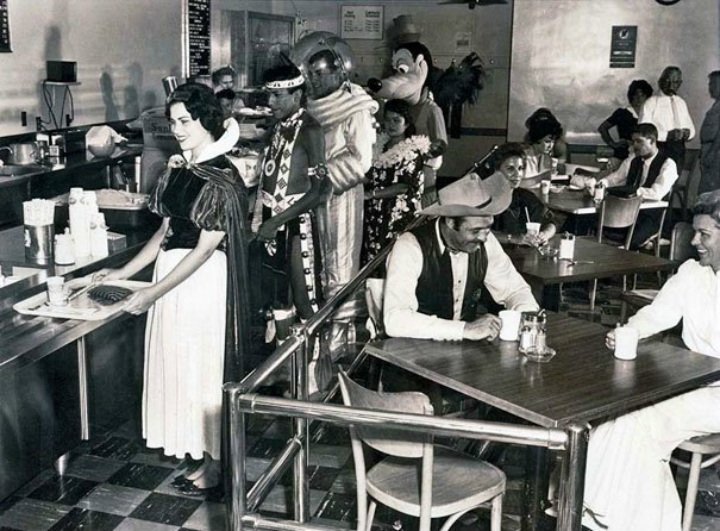
In this delightful snapshot from the original Walt Disney theme park, actors in full costume take a lunch break, creating a scene straight out of a childhood fantasy. Here, an astronaut and Goofy, in their elaborate outfits, appear to face a humorous challenge in enjoying their meals.
Amidst the backdrop of the happiest place on Earth, these costumed characters from different realms of imagination come together, sharing gossip and smiles. Their genuine laughter and camaraderie shine through, offering a behind-the-scenes glimpse into the magic and merriment that Disney is known for. It's a charming moment that captures the joy of a world where fantasy and reality playfully intersect.
A Glimpse Inside the Titanic's Luxurious Gymnasium
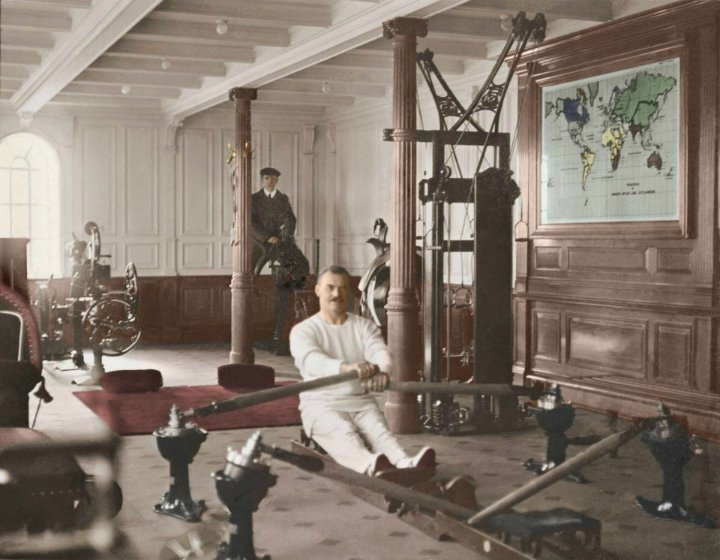
In the annals of history, few tales are as enduring and tragic as that of the RMS Titanic. While the ship's fate is well-known, surprisingly few photographs remain of its opulent interior. This captivating image, however, offers a rare glimpse into a bygone era. In this photograph, a mustached gentleman is seen diligently working out on a rowing machine within the Titanic's state-of-the-art gymnasium.
During its maiden voyage between Southampton, the United Kingdom, and New York, the Titanic was celebrated as the epitome of luxury and was famously deemed "unsinkable." Its opulence extended to its amenities, including a modern gymnasium, as showcased in this compelling picture.
Sipping the Future in France
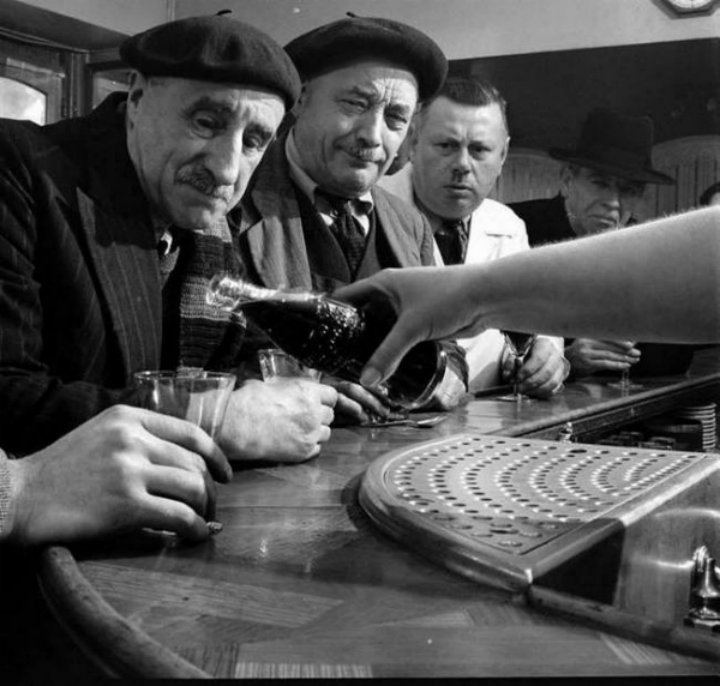
In 1950, Coca-Cola burst onto the French scene, ready to sprinkle its fizzy magic in a land known for wine and café culture. With a confident marketing campaign shouting 'Drink Fresh!,' the iconic American brand was set to charm the French. Coca-Cola's vans, emblazoned with this catchy slogan, became a common sight on the streets, doling out samples to eager French citizens of all ages.
Dubbed the 'cold revolution,' this launch marked a significant cultural shift. A photograph from this era captures the essence beautifully: elderly Frenchmen, traditionally more accustomed to sipping wine, enjoy the bubbly taste of Coca-Cola, a symbolic sip of the changing times and tastes.
Roller Skating Rendezvous
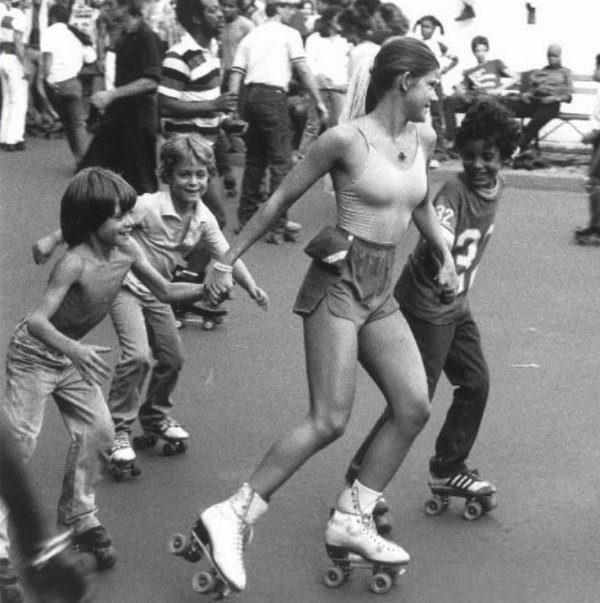
The 1970s were a time when roller skating wasn't just a pastime; it was a phenomenon, a dazzling blend of sport, music, and style. Youngsters found freedom and flair on wheels, with skating rinks becoming vibrant hubs of this groovy trend. In this snapshot, a young woman embodies the era's spirit, gracefully gliding around the rink with a group of kids.
She's not just skating; she's sharing the culture, teaching them how to balance, twirl, and exude coolness on wheels. It's a picture of joy and youthful exuberance, capturing the essence of a decade where roller skating was the epitome of cool.
Majesty of the Grounded Valkyrie

The XB-70 "Valkyrie," a formidable prototype aircraft developed in the United States during the 1950s, stands as a symbol of ambition and technological prowess. Engineered for the Cold War era, it was designed to fly at Mach-3 speeds with remarkable precision in targeting.
However, the XB-70's journey was cut short, and they never fully entered service due to the overreach of the project. This photograph captures the grandeur and might of the "Valkyrie," even as it remains grounded. It's a powerful visual of what could have been, a testament to the ambition of aviation engineering, and a poignant reminder of its unrealized potential in the skies.
Beauty on the Wing

Amid World War II's turmoil, an unknown, beautiful woman perched on the wing of a VMTB-234 aircraft offers a moment of timeless allure. The photograph, its exact date lost in history, captures her in uniform, blending the stark realities of war with a glimpse of grace.
Her beauty, both timeless and strikingly modern, stands out against the rugged backdrop of the warplane. During the war, such captivating images were morale boosters shared among soldiers to bring a touch of humanity and cheer amidst the chaos. This mysterious woman, lost to history, remains an iconic symbol of beauty and resilience in an era of conflict.
Capturing Samurai Elegance
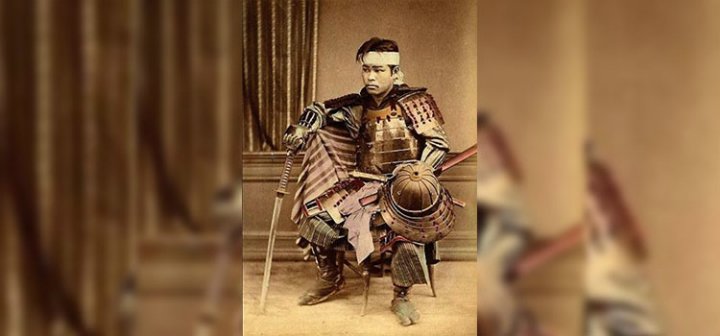
In 1870, the British-Italian photographer Felice Beato, who resides in Japan, immortalized the captivating world of the samurai through his lens. His photographic studio in Japan allowed him to document a nation that was largely isolated from the rest of the world during that era.
Felice had a particular fascination with the samurai, and it's easy to understand why. This remarkable photo showcases the samurai's poised and majestic presence, adorned in intricate uniforms and a strangely modern hairstyle. It offers a glimpse into the elegance and grace of these warriors, providing a window into a bygone era of Japanese history.
Marilyn Monroe's Moment with Arthur Miller
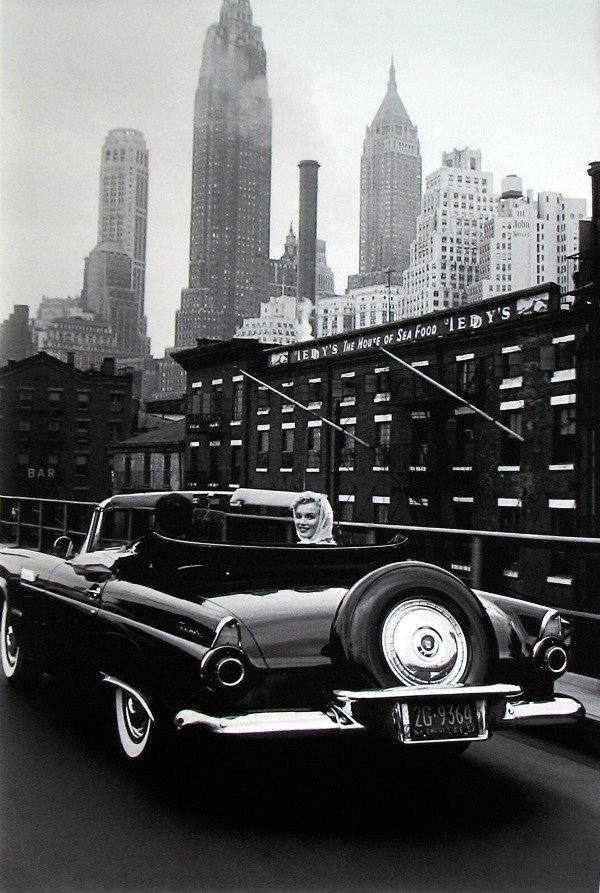
In a candid snapshot by photographer Sam Shaw, we see Marilyn Monroe, the epitome of Hollywood glamour, in a rare, unguarded light. Known for his ability to capture the essence of Marilyn beyond her star-studded facade, Sam's close relationship with her is evident in this photo.
It shows Marilyn, relaxed and genuinely playful, cruising alongside her husband, Arthur Miller, in their shiny Ford Thunderbird. This image offers a glimpse into her life away from the spotlight, revealing a side seldom seen by the public. It's proof of Sam's skill and their bond that he could portray the iconic actress in such a humanizing way.
Railroad Through the Wilderness
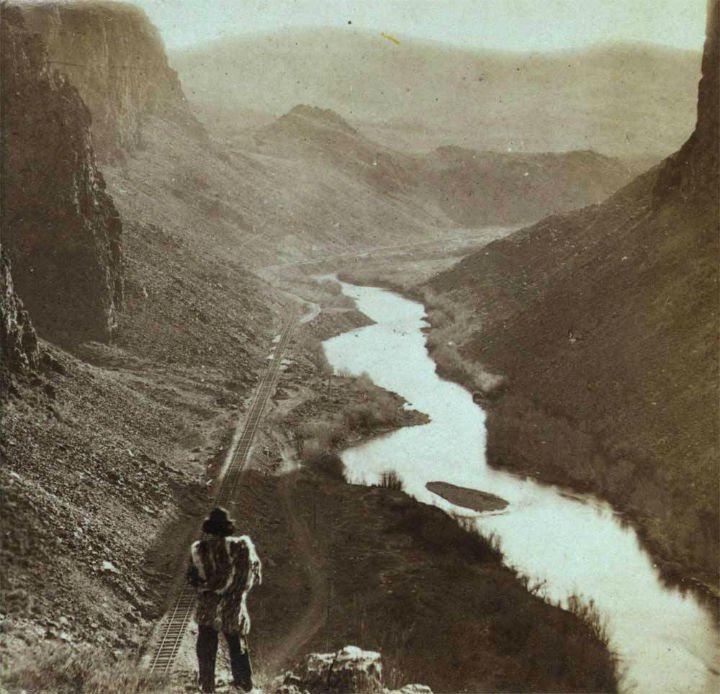
In 1868, a solitary Native American overlooks a meandering creek in Nebraska, his gaze fixed on the newly completed Transcontinental Railroad. This image, steeped in quiet contemplation, belies the profound impact the railroad would have on his people and their way of life.
The construction of this vast iron pathway, while a marvel of engineering, brought irreversible changes to the native lands. The Native Americans had relinquished their land rights years before, unaware of the full consequences. The railroad's intrusion disrupted ancestral hunting grounds and led to the drastic decline of the bison population, vital for the Navajo's sustenance and culture.
Duck Face in the Victorian Era
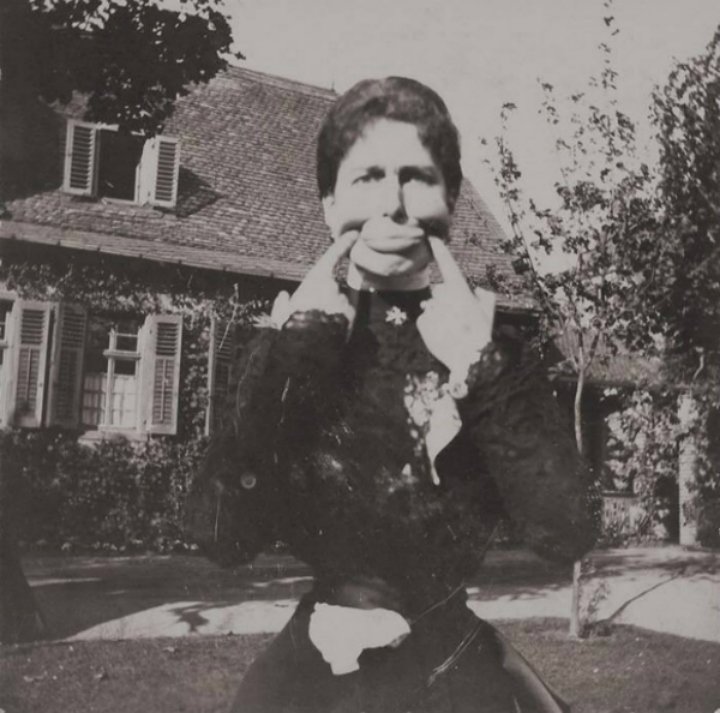
Contrary to the stiff, formal image we often associate with Victorians, this 19th-century photograph reveals a lighter, more playful side. Here, a woman poses for the camera, not with the expected straight-laced seriousness, but with a hint of mischievousness, possibly giving us one of the earliest examples of the 'duck face.'
This expression, now a popular pose on social media, seems to have had its precursors even in the era of corsets and top hats. The woman's expression in this rare photograph challenges our assumptions about the Victorian era, showing that a sense of humor and fun was very much alive, even when captured in an old photograph.
Fidel Castro's Court Tactics
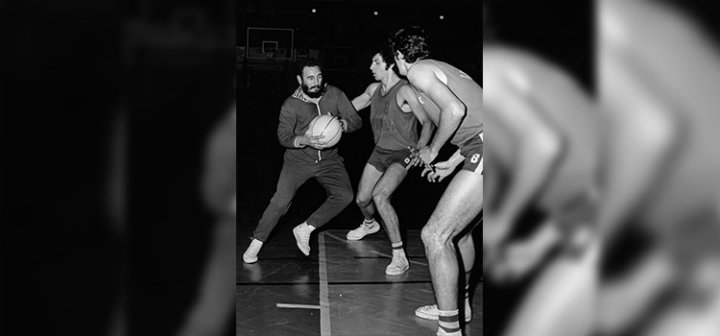
On a visit to Poland in 1972, Fidel Castro, known more for his political maneuvers than athletic prowess, took to the basketball court with students in Krakow. Despite hailing from Cuba, where baseball reigns supreme, he harbored a keen passion for basketball.
Fidel saw the sport as a metaphor for warfare, admiring its demands for speed, agility, and tactical thinking. This surprising interest in basketball showcases a different side of him, often overshadowed by his political identity. His engagement with the students in a game of hoops offers a glimpse into how sports can bridge diverse worlds, even for a figure as polarizing as this Cuban leader.
A Victorian Self-Portrait Pioneer
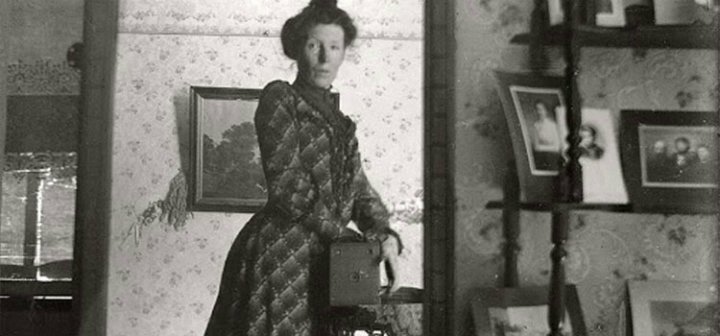
In 1900, a time far removed from our digital age, a primly dressed woman pioneers what we now know as a selfie. This early self-portrait defies the common belief that selfies are a modern-day phenomenon. Victorians, known for their fascination with photography, were at the forefront of this trend.
Their enthusiasm for capturing images often led to creative methods of self-photography. This image of a woman, meticulously composed and capturing her likeness, is a testament to the timelessness of self-expression through photography. It's a charming glimpse into the past, showing that the desire to document oneself is not just a product of the smartphone era.
Eyes of the Vietnam War
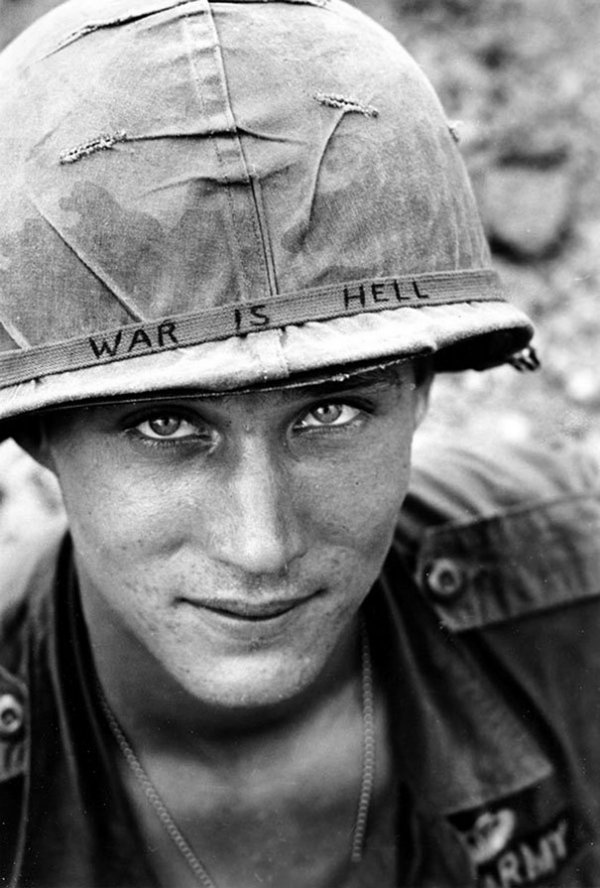
Captured by photojournalist Horst Faas in 1965, this striking photograph from South Vietnam conveys the profound and haunting reality of war. The young soldier's eyes, deep with the weight of experiences beyond his years, and the stark message 'War is Hell' emblazoned on his helmet speak volumes about the brutal nature of the Vietnam War.
This conflict, notorious for its harsh realities and the scale of its violence, marked a turning point in how war was perceived, especially among the youth. It sparked widespread protests and left many soldiers deeply scarred, physically or mentally, changing them forever. This image is a powerful reminder of the devastation wrought by war.
Jazz Diplomacy with Louis Armstrong
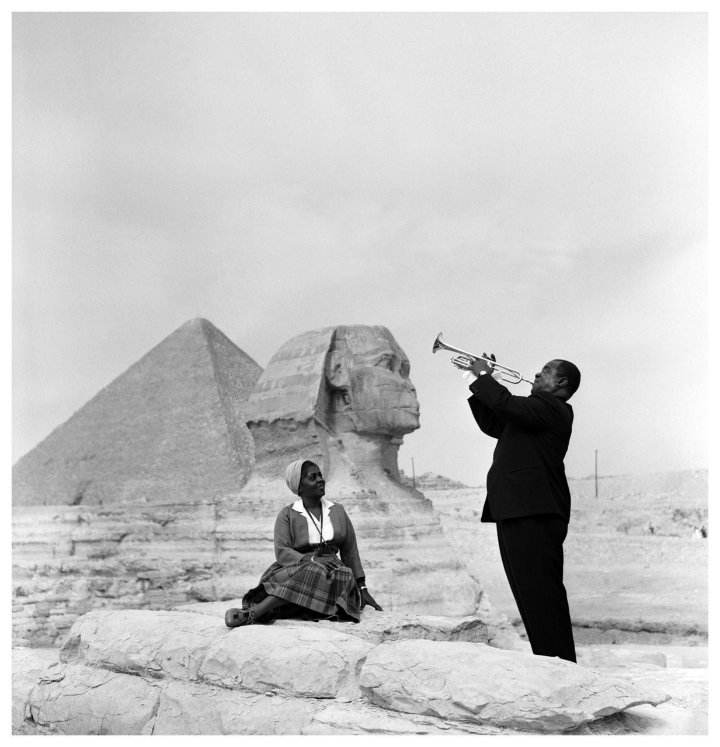
In a heartwarming 1961 snapshot by New York Times photojournalists, jazz legend Louis Armstrong is seen serenading his wife in Egypt. This tour was part of a larger United States effort during the Cold War to promote American culture globally, with jazz music as a key ambassador.
The United States believed jazz could win hearts and minds around the world, aligning them with American ideals. Louis, however, steered clear of politics, preferring to let his trumpet do the talking. This image captures not just a personal moment but also a slice of cultural diplomacy, with Louis playing a role he was most comfortable with—that of a musician.
Among the First Handbag Cams
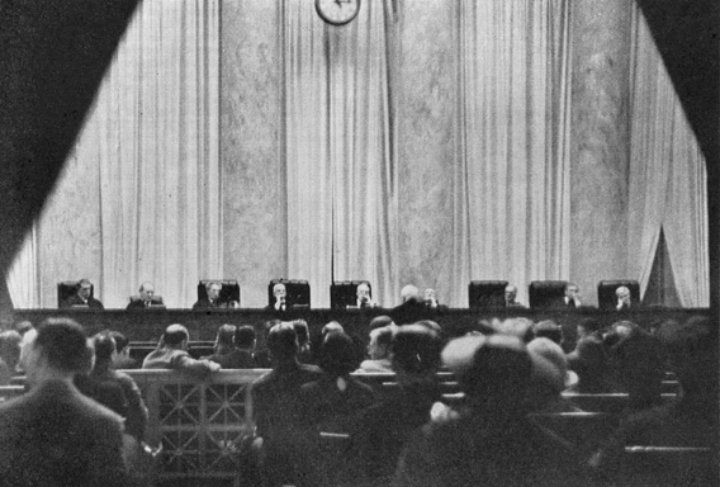
In 1932, a young woman daringly defied the rules against photographing the Supreme Court in session with a stroke of ingenuity. She discreetly cut a hole in her handbag, ingeniously concealing a camera inside. This clever tactic, reminiscent of something out of a "James Bond" film, enabled her to capture a rare scene inside one of the most secure and private areas in American law.
Her successful attempt at this photographic feat remains an exceptional instance, as taking photos inside the Supreme Court is notoriously prohibited. This moment of audacity and creativity yielded a unique image and marked a fascinating chapter in the history of covert photography.
Balancing Act Over Ruins
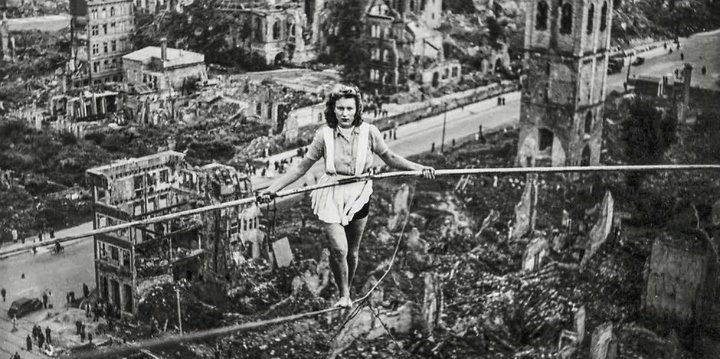
Amidst the ruins of Cologne, a city ravaged by the extensive bombings of World War II, a striking image emerges. In the foreground, a young woman, the epitome of 1940s glamour, deftly walks a high wire against the backdrop of destruction. This photo captures a profound juxtaposition—the bleak aftermath of war and the vibrant spirit of a younger generation.
Her poised high-wire act over the devastated city symbolizes hope and the resilience to move forward. It's a visual representation of a society, despite its scars, looking towards a future filled with optimism and determination, learning from the past to build a better tomorrow.
The Essence of a Mojave Guide
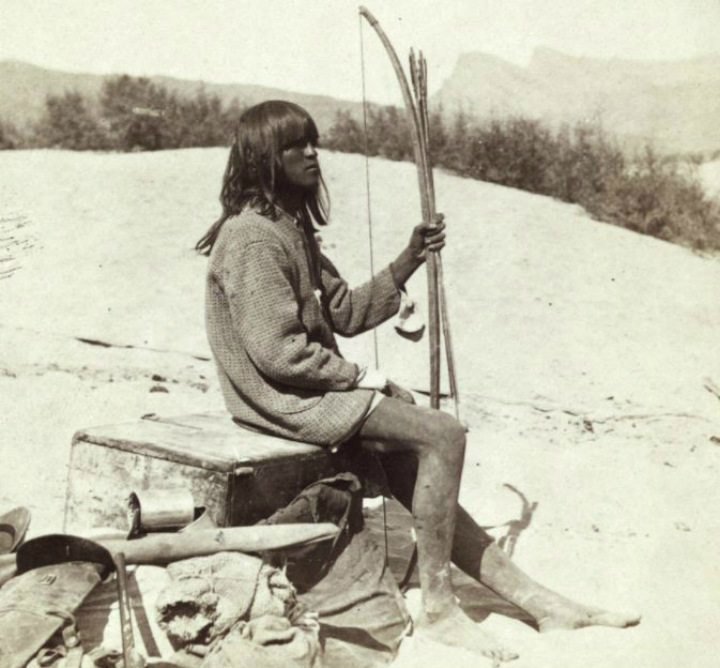
In the 1870s, a remarkable photograph emerged, offering a glimpse into the life of Maiman, a Mojave Indian guide. Timothy H. O'Sullivan, the photographer behind this candid shot, had a distinctive passion for documenting Native American cultures. Maiman, celebrated for his role as a guide, often led curious Americans into the vast desert landscapes.
Timothy's work was emblematic of its time, portraying Native Americans in their natural settings. Through his lens, we see the profound connection between Maiman and the land he called home and the intricate interplay of cultures that defined this era. This captivating photograph transcends time, inviting us to reflect on the rich tapestry of history.
The Ice Wagon
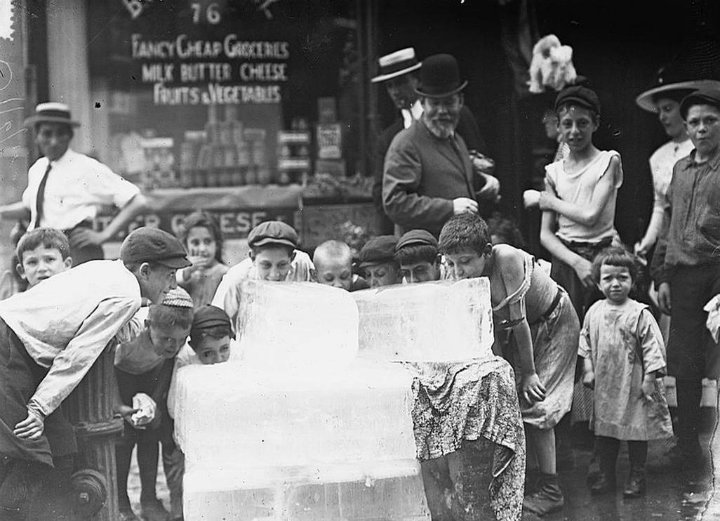
In this heartwarming snapshot frozen in time, a group of spirited children gather around a massive block of ice. The scene unfolds on a sweltering summer day, an era when the luxury of modern air conditioning was but a distant dream. For these youngsters, the sight of the ice wagon must have felt nothing short of miraculous.
As the sun beat down relentlessly, turning the asphalt into a sizzling skillet, that colossal block of ice represented their oasis of coolness and refreshment. In a time before the convenience of air conditioning, such simple joys as chasing the ice wagon brought delight to these youngsters, creating cherished memories of youthful summers.
